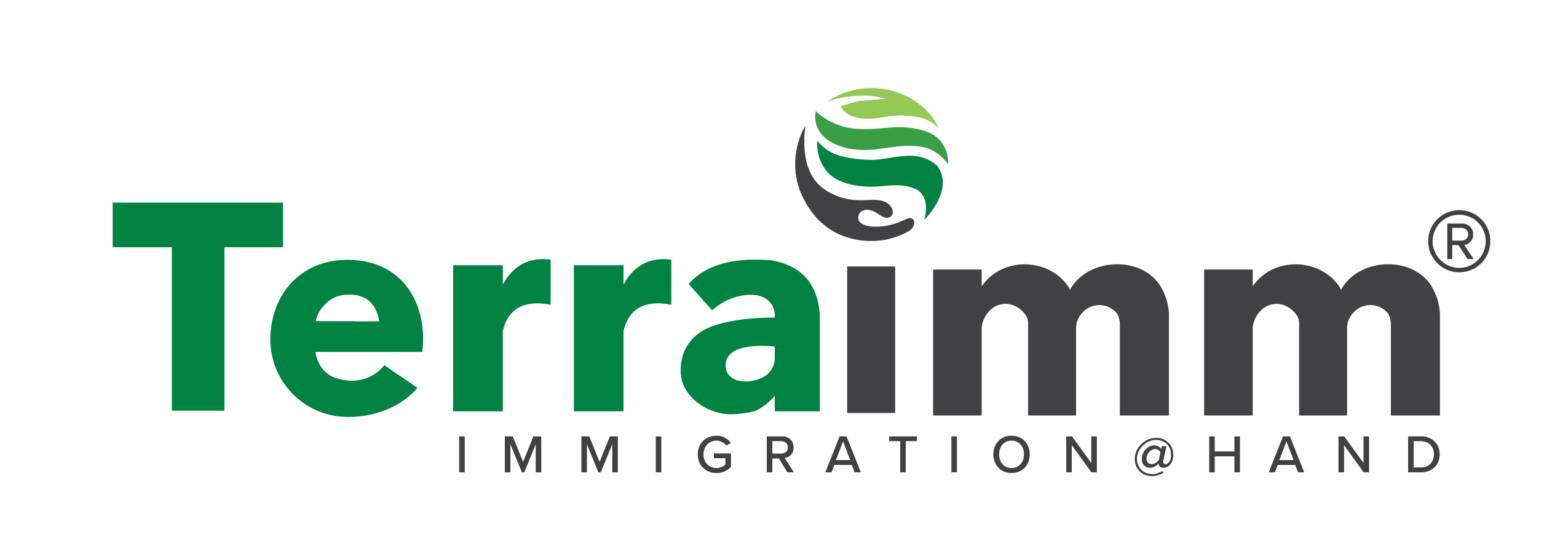For more information:
Students and Employment | USCIS
Overview:
- Introduction to the F-1 visa
- F-1 visa benefits
- F-1 requirements
- F-1 visa process
- F-1 transfer and withdrawal
- F-1 employment on campus
- F-1 remaining in status during summer and illness
- F-1 CPT and OPT
- Change of status
- F-1 extension of stay
1. Introduction to the F-1 visa
The F-1 visa is a strong visa that enables students to enroll in school in the United States. Those who are studying for undergraduate and graduate degrees particularly need this visa.
A school accredited by the Student and Exchange Visitor Program is required before you can apply and be accepted there (SEVP). To get a Form I-20 and start the process of applying for admission to the United States, you must register in the Student and Exchange Visitor Information System (SEVIS). The SEVIS charge is thereafter due (Form I-901).
2. F-1 visa benefits
- Ability to pursue a degree in the United States
- Your family can accompany you (spouse and children)
- Ability to work
- No F-1 cap
- You can travel if your I-20 is still valid, and you have your DSO’s consent.
3. F-1 visa requirements
These are the requirements for an F-1 visa:
Full-time course of study
You must enroll in a full-time program of study. That would be the equivalent of 12 semester/quarter hours for junior college, undergraduate, or graduate students. As long it’s not an English subject, you may enroll in one online course. Without your DSO’s consent, you are not permitted to reduce your course load. Courses can be cut down to six semester/quarter hours. The DSO can further lower the course load if there are medical grounds.
Cannot attend publicly funded K-12 schools
You must enroll attend a private institution rather than the public elementary, middle, or high schools. As long as you pay the school back for the year’s tuition, you are permitted to enroll in a public K-12 institution.
Sufficient funds
For the duration of your stay in the U.S., you must have enough money to fund your studies.
Must be proficient in English
You must be fluent in English unless the school can explain why it is not needed. The most frequent justification for waiving this requirement is enrollment in an English-language training program.
Must maintain communication with DSO
You must contact your Designated School Officials (DSO) to do any of the following:
- Work in the United States
- Apply for a driver’s license
- Apply for a social security number
- Change your major, program, or degree level
- Change your education level
- Transfer to a new school
- Be absent from classes
- Take a vacation
- Travel outside of the United States
- Move to a new address
- Change your name
- Request a program extension
Entering a B1/B2
You must still get an F-1 visa overseas, re-enter the country, or submit a change of status application if you want to visit the United States on a B1/B2 (visitor’s) visa.
Grace periods
You have a grace time of 30 days to enter the country before the commencement of your program, and a grace period of 60 days to exit.
Health Insurance
The law does not require that you purchase health insurance. However, a lot of schools have their regulations that need it.
Changing from one degree to another or the same degree
You do not need to submit a fresh F-1 petition if you wish to pursue higher education or the same degree in a different subject. Instead, discuss with your DSO.
4. F-1 visa process
Several actions must be taken to get an F-1 Visa. The steps are listed below with a more thorough explanation following:
Apply to the school and obtain Form I-20
The SEVIS Form I-20 contains basic personal data about you as well as details about the institution, course of study, and costs. Your F-2 dependents must get their own I-20 documents to travel with you.
Complete Form DS-160
Before arranging a visa interview, Form DS-160 for you and your dependents must be finished. A photo of oneself must be either uploaded or brought to the interview. Depending on the nation, you could also have to pay a cost for the issuing of the visa. For more information on DS-160 click here.
Document gathering for Visa interview, you will need the following documents:
- Proof of payment of visa fees
- Passport valid for travel for six months
- Transcripts, diplomas, degrees, or certificates from schools you previously attended
- Standardized test scores are required by your U.S. school.
- Documents proving intent to depart the United States upon completion of the course of study.
- Proof of funding for all educational, living, and travel costs.
Visa Interview
The officer will decide if you qualify for the F-1 Visa during the interview. Biometrics will be collected on a different visit, often one or two days beforehand. If any information is missing from the application, you will be informed. You could be required to pay an extra visa-issuing cost if the interview goes well.
Presenting yourself at a port of entry
To enter the U.S., you must go to a Port of Entry and request authorization from Customs and Border Protection. Major airports and land border crossings are examples of ports of entry. The CBP agent will decide whether you should be granted entry once you provide your passport, visa, and Form I-20. They will provide you with a paper Form I-94 Arrival/Departure Record or an entrance stamp. For more information on I-94 click here.
5. F-1 transfer and withdrawal
You are allowed to transfer to another school if you meet several requirements. These requirements are:
- You must be a real student.
- You must have been pursuing a full-time course of study.
- You must have the funds to transfer schools.
- You must begin classes at the transferred school within 5 months of transferring out of the current school or within 5 months of the program completion date, whichever is earlier.
- You must request the SEVIS record to be transferred to the new school within 60 days of completing the program.
- You must not have worked in unauthorized employment.
How to transfer
- You must alert the DSO, who then gives the transfer-to-school access to the SEVIS information.
- Obtain a SEVIS I-20 from the new school you are attending.
- Within 15 days of the start date of your new school, you must inform your new DSO there. Only once the transfer-to-school notifies SEVIS that you are registered for classes is the transfer complete.
- If you do not adhere to these processes, you will be considered out of status.
Withdrawing from an institution
- Your DSO must officially approve your request before you leave the institution. You will have 15 days to depart the United States.
- You won’t be granted a grace period if you don’t ask your DSO for it.
- If you wish to resume your studies, you must apply for a new I-20 and pay the SEVIS cost once more.
6. F-1 employment on campus
Except for on-campus work, which is permitted as soon as you are admitted, you are not permitted to work throughout your first year of college. If you transfer, you must submit a new work request from your DSO before beginning to work once again. You may work off-campus after your year only under specific circumstances:
- You may work 20 hours a week while classes are in session if there was an unexpected financial crisis that was out of your control. During breaks from school or during holidays, you can work full-time.
- If the Department of Homeland Security has suspended the employment criteria for a certain nation.
- Students from countries affected by natural catastrophes or civil instability may be eligible for special programs.
- If you are employed by a recognized international organization.
7. F-1 students remaining in status during summer and illness
If you plan to attend school again for the next term, you will be regarded as being in status throughout the summer. If you become unwell and miss class or take fewer credits, you will continue to be in status until you feel well enough to resume your studies.
8. F-1 CPT and OPT
Curricular Practical Training (CPT) – Any mandatory internship or practicum that may be completed either full or part-time is referred to as a CPT. OPT (discussed below) is ineligible after 12 months of full-time CPT, whereas part-time CPT has no effect. To be eligible for CPT, you must have attended school for at least a year. To submit a request for CPT to a DSO, you must have a job offer.
Optional Practical Training (OPT)
Optional practical training is short-term work in your area of study. If it is part-time employment, it may be used before finishing a program when classes are not in session or throughout the academic year. Post-completion OPT will be deducted in favor of pre-completion OPT. You must submit your application within 60 days after the program’s conclusion or 90 days after the academic year ends. To apply for OPT, there is no need for a work offer. OPT in SEVIS must be recommended by the DSO. To get a work authorization document, you must submit Form I-765 and the SEVIS I-20 with OPT (EAD). Without an EAD, you are unable to work. After receiving a bachelor’s, master’s, or doctoral degree, you are qualified to take part in the post-completion OPT. Training must be completed within 14 months of graduation. The following includes the type of employment that is allowed under OPT:
- Multiple employers
- Work for hire
- Changing employers (STEM OPT needs to be E-verified)
- Self-employment (unless STEM OPT)
- Agency or consulting firm work
- Unpaid or volunteer work as long as it is 20 hours per week (unless STEM OPT)
- Part-time work (at least 20 hours per week)
- Full-time work
You must leave the country within 60 days of completing OPT.
STEM OPT
Post-completion OPT for STEM students does not have a 12-month time restriction. Students who major in science, technology, engineering, or mathematics or those who double major in these fields are covered. The job must appear on the list of STEM-designated degree programs.
The business must submit Form I-983 describing their ability to hire and teach you, how you are not competing with U.S. workers for jobs, and how the training advances your objectives. Employers must undergo E-verification.
Specific objectives for the information, abilities, and methods that will be acquired must be included in practical training. Evaluations and monitoring are required. Every six months, you must meet with your DSO to go through any modifications that may have taken place.
A yearly self-evaluation that has been approved by your DSO is required. Any prospective adjustments that have been made throughout the year must be recorded on the I-983 Form.
STEM OPT may be extended by 24 months beyond the original 12 months.
Unemployment During OPT
During your 12-month OPT, you may not be unemployed for more than 90 days. A STEM student is not allowed to be unemployed for more than 150 days in 36 months. Unemployment is defined as having a weekly wage of less than $20.
Traveling Under OPT
Only with a DSO endorsement are you permitted to leave and return. As long as your DSO signed the SEVIS I-20 during the last six months, you may continue working. You must show a legitimate F-1. To guarantee a smoother experience reentering, you should bring a letter of unemployment or an offer of work. At the port of entry, you must also provide your EAD.
9. Change of status
As an F-1 student, you are allowed to switch to any available non-immigrant (temporary) visa. The H-1B visa. One of the most common ones, calls for a bachelor’s degree or above.
H-1B
You can think about applying for the H-1B which requires a bachelor’s degree or higher. They are available for the following fields: the physical sciences, social sciences, medicine, health, education, business, law, accountancy, religion, and the arts; also, architecture, and engineering.
H-1B and CAP-GAP
– If your petition is accepted and you are chosen in the H-1B lottery, your new status won’t start until October 1. Therefore, if your OPT expires on April 1 or later, it is automatically extended until September 30 of that year. It is because of this that there is no time between the F-1 visa’s expiration and the H-1B start date.
– If the F-1 OPT ends before April 1, you are still permitted to stay in the US but are unable to work until your H-1B visa starts on October 1.
– You may remain in the US but will be unable to work if the H-1B has not been decided by USCIS by September 30.
– If the H-1B petition is turned down, refused, or canceled, you will have 60 days to find another job.
– Traveling is not advised while your cap-gap change of status is ongoing since it can be deemed abandoned.
You may change employees during the CAP-GAP period.
10. Extension of stay
If you are falling behind in your work, you can ask for a stay extension. If there were issues, such as medical issues or academic choices, your DSO could give such an extension. These academic choices may involve shifting degrees, picking difficult research questions, and more. Academic expulsion or probation are not acceptable justifications for a stay extension. You will be deemed out of status if you have not finished your program and do not request an extension when required. The reinstatement request must then be made.









